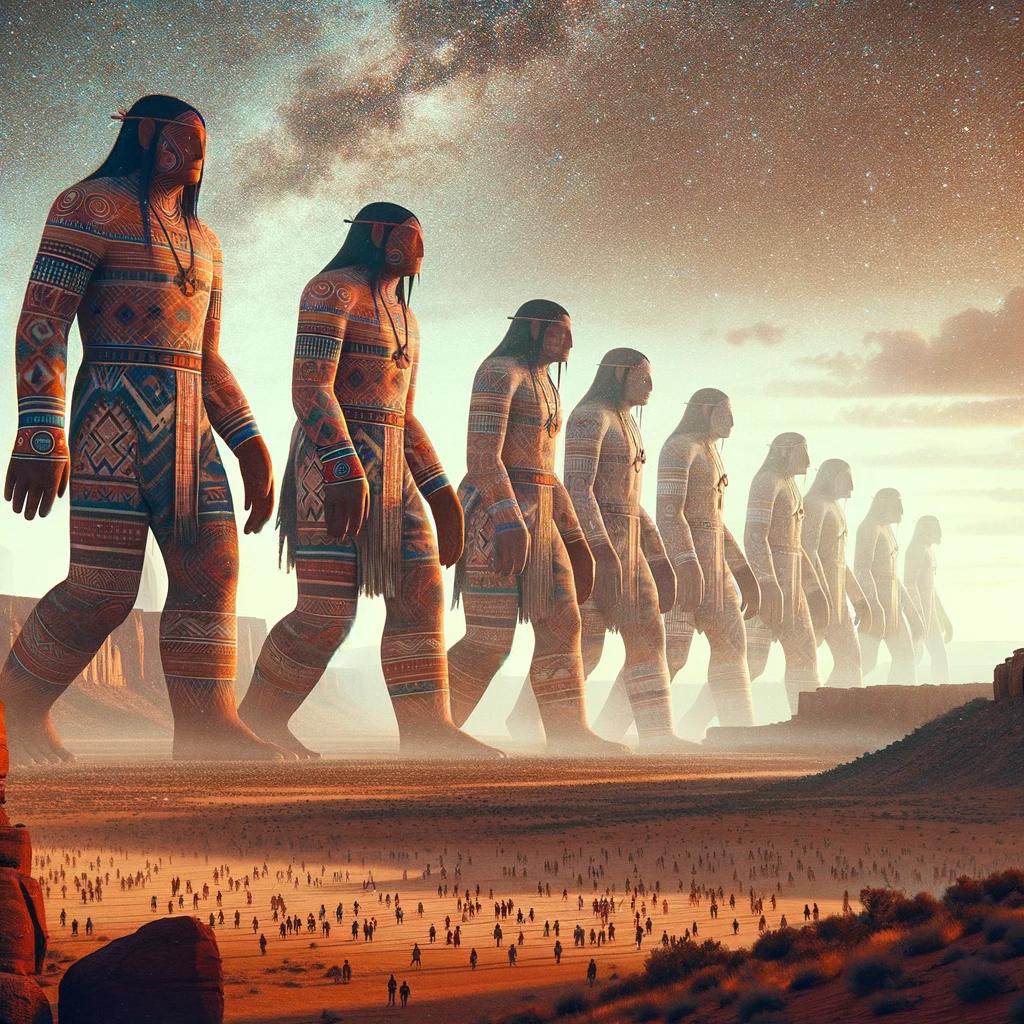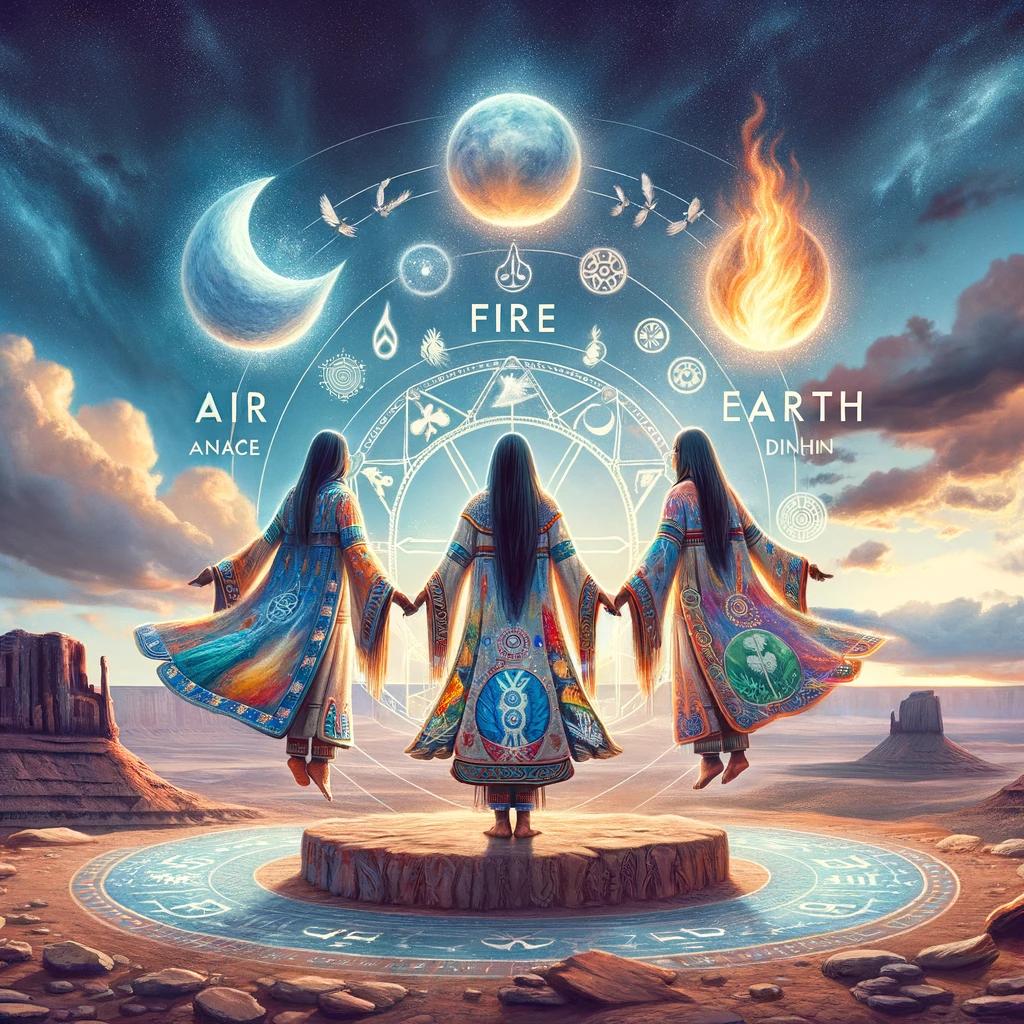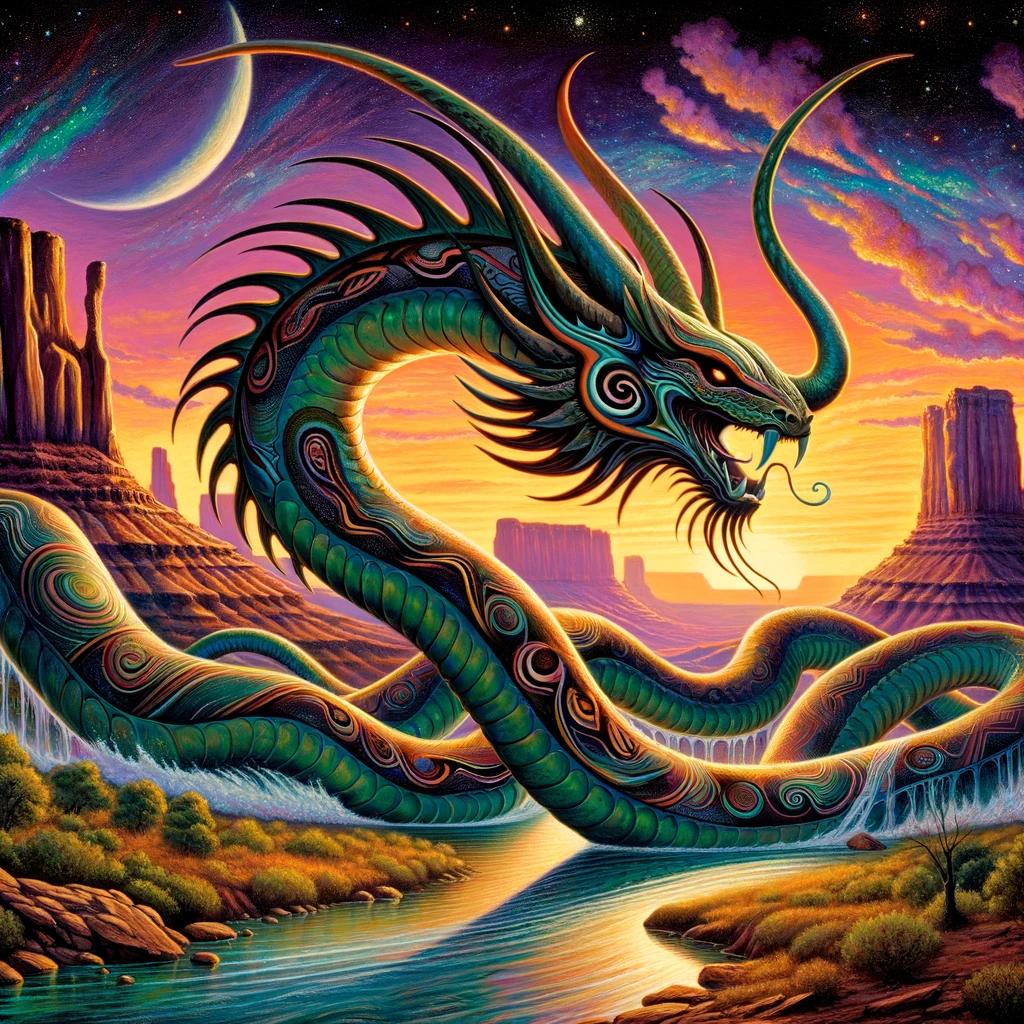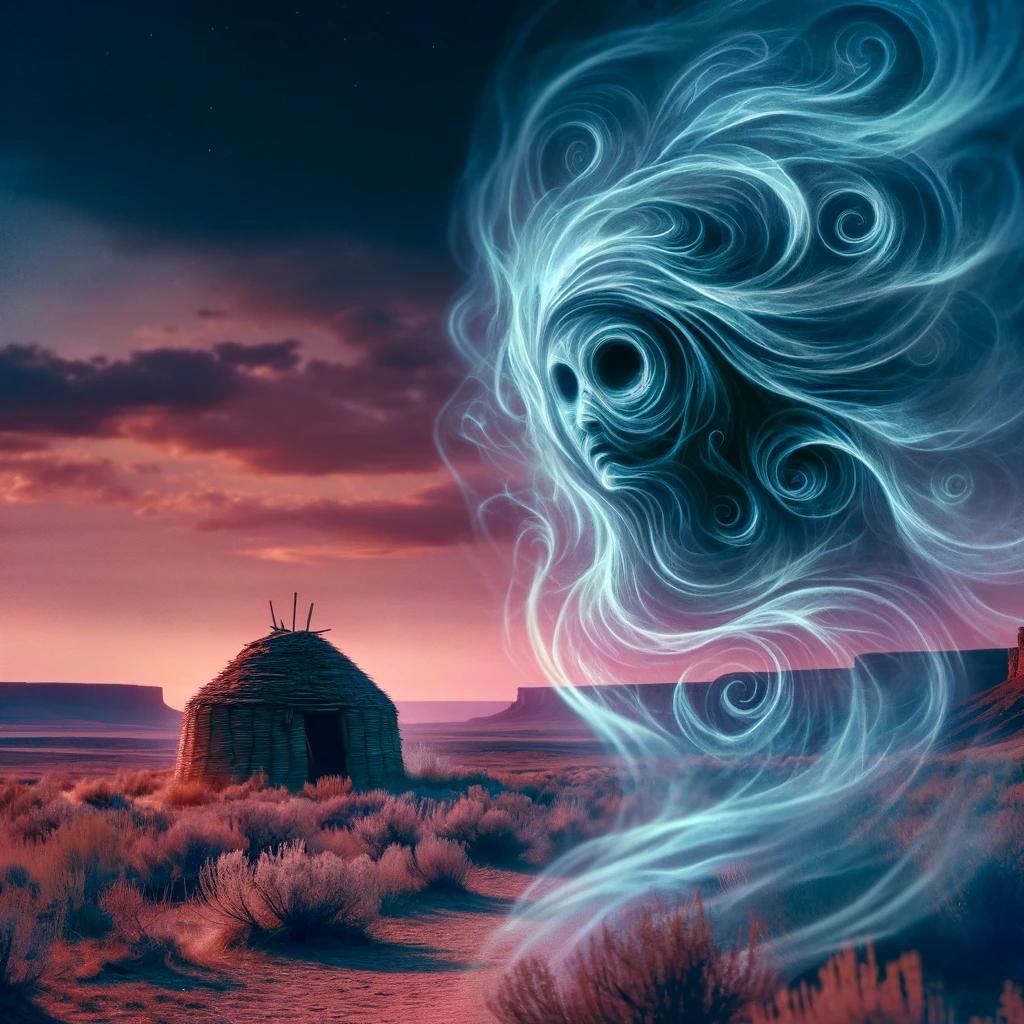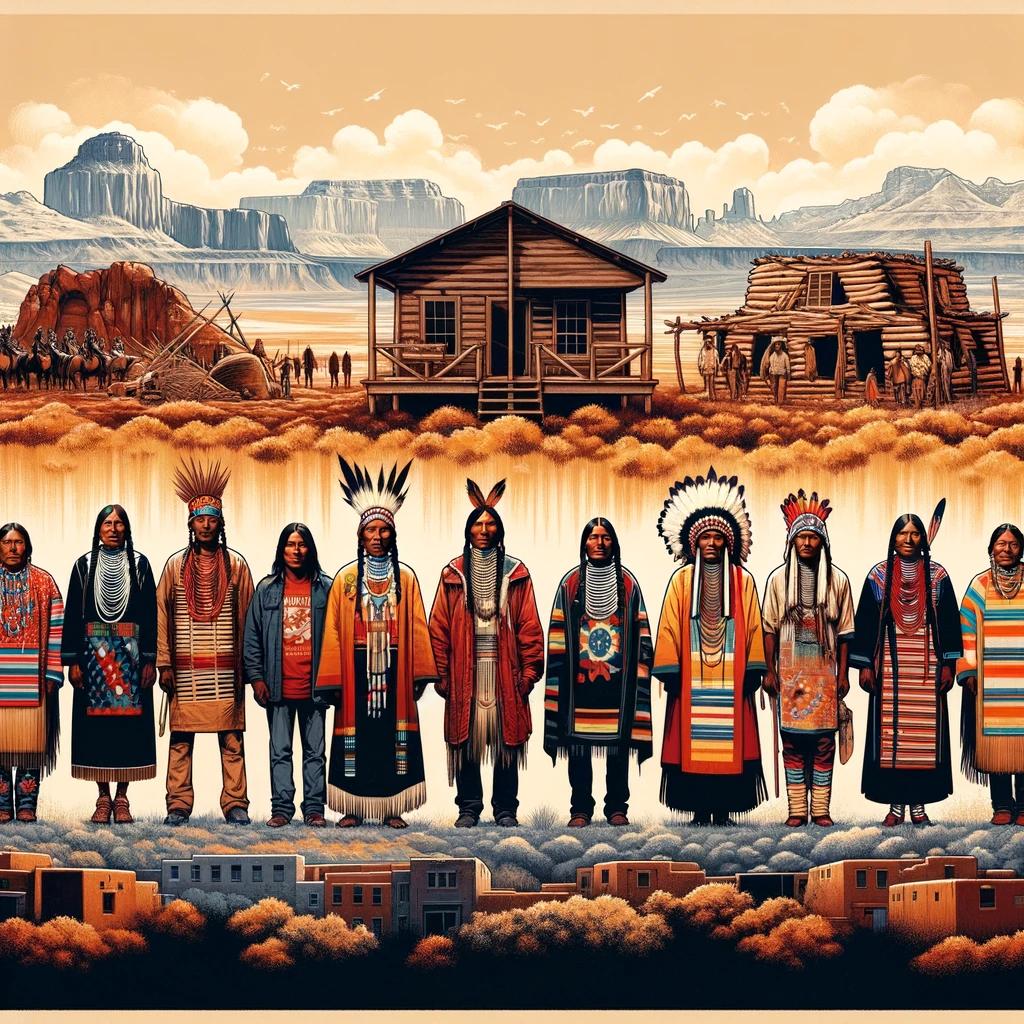Navajo Myths and Legends: Discover the Rich Tales of the Navajo People
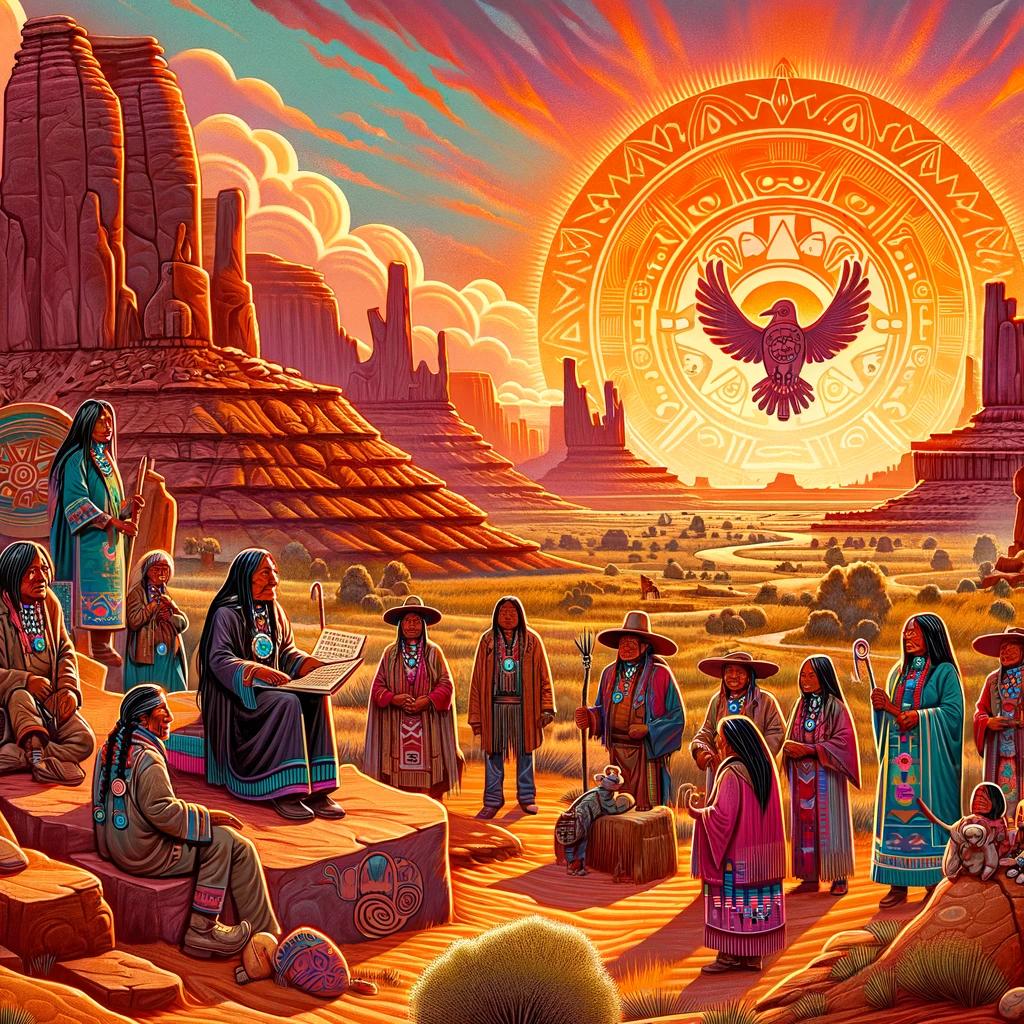
Navajo Myths and Legends are captivating tales deeply rooted in the rich cultural heritage of the Navajo people. These narratives encompass diverse elements, from the creation story and the heroic adventures of the Navajo Hero Twins to the symbolic significance of colors and the spiritual connection to nature.
Passed down through generations, these myths preserve the Navajo oral tradition and play a vital role in shaping their customs and beliefs. Discover the enduring influence of Navajo myths and legends, their preservation efforts, and their continued importance in contemporary society.
Navajo Creation Story
The Navajo Creation Story holds deep spiritual significance within the Navajo culture, encompassing the origins and journey of their people. This timeless narrative is divided into various sections, each unveiling crucial aspects of Navajo cosmology and mythology.
The Origins of the Navajo People
According to Navajo belief, the Holy People created the Navajo people within the First World. This sacred act bestowed upon them divine knowledge, wisdom, and resilience. The Navajo people are said to have emerged from the underworld through a reed.
They traversed four different worlds in search of their rightful place on earth.
The Role of the Holy People
In Navajo mythology, the Holy People play a fundamental role in the creation and guidance of the universe. They are revered as divine beings with immense power and wisdom.
The Holy People act as guardians and teachers, offering spiritual guidance and intervention in the lives of the Navajo people.
The Creation of the First World
The Navajo Creation Story describes the creation of the First World by the Holy People. This world was a beautiful and harmonious place inhabited by various sentient beings. However, it was ultimately destroyed due to human arrogance and disregard for the natural order.
The Emergence into the Fourth World
Following the destruction of the First World, the Holy People guided the Navajo people through a series of journeys across the Second and Third Worlds. As they overcame challenges and learned valuable lessons, they eventually emerged into the Fourth World, the present realm they inhabit.
The Navajo Creation Story serves as a poignant reminder of the Navajo people’s resilience, connection to the divine, and the importance of maintaining harmony with the natural world.
Navajo Mythology
Navajo Mythology plays a significant role in shaping the cultural beliefs and practices of the Navajo people. Within this rich tapestry of stories, several key themes emerge, highlighting the adventures of heroic figures, the importance of animal spirits, and the deep connection to sacred rituals.
Explore the fascinating world of Navajo Mythology through the following subtopics:
The Hero Twins and Their Adventures
The tale of the Hero Twins is a captivating Navajo myth that showcases bravery, resilience, and the triumph of good over evil. Born to the Changing Woman, the Hero Twins embark on a series of perilous quests, confronting monsters, sorcerers, and challenges that test their courage and cunning.
The Importance of Coyote in Navajo Lore
Coyote holds a special place in Navajo mythology, often portrayed as a trickster figure with both mischievous and wise qualities. Coyote’s antics, humor, and cleverness serve as important lessons in Navajo lore, teaching moral values and illustrating the consequences of one’s actions.
The Navajo Legends of Changing Woman
Changing Woman is a revered figure in Navajo mythology, symbolizing the cyclical nature of life and the power of fertility. As the eternal mother, she embodies the essence of creation, nurturing all living beings and playing a vital role in the emergence of the Navajo people.
The Sacred Mountain Chant Ritual
The Sacred Mountain Chant Ritual holds profound religious significance for the Navajo community. This ceremonial practice involves elaborate songs, prayers, and dances performed in honor of the sacred mountains, believed to be the dwelling places of the Holy People.
It serves as a spiritual connection to the divine and reinforces communal bonds.
As we delve into Navajo Mythology, we immerse ourselves in captivating narratives that offer insights into the Navajo culture, their relationship with the natural world, and the guiding principles that shape their lives.
Legends and Myths of the Navajo People
The rich oral tradition of the Navajo people is filled with captivating legends and myths that have been passed down through generations. These stories provide valuable insights into the Navajo culture and offer a glimpse into their deep spiritual connection to the land and the world around them.
The Navajo Hero Twins’ Journey
One of the most renowned tales in Navajo mythology is the epic journey of the Hero Twins. Born to the Changing Woman, these twins embarked on a heroic quest to rid the world of monsters and bring peace to their people.
Their adventures, filled with bravery and cunning, showcase the Navajo values of courage and resilience.
The Navajo People’s Connection to the Land
The Navajo people have a profound connection to their ancestral lands, which is deeply intertwined with their myths and legends. These stories emphasize the importance of respecting the natural world and highlight the Navajo’s role as caretakers of the land.
The legends illustrate how the Navajo people have shaped their identity through their strong bond with their environment.
Stories of the Four Cardinal Points
Navajo legends often revolve around the four cardinal points: the East, West, North, and South. Each direction holds its own significance and is associated with specific qualities and spiritual beings. These stories explain how the Navajo people have relied on the guidance and wisdom of the cardinal points throughout history and how they continue to draw strength from them.
Navajo Legends Passed Down Through Generations
The oral tradition plays a vital role in preserving Navajo myths and legends. These stories have been carefully passed down through generations, ensuring their endurance and authenticity. The tales act as a bridge between the past and the present, carrying the wisdom, values, and teachings of the Navajo people.
They serve as a powerful tool for cultural transmission and continue to shape the Navajo identity today.
Cultural Significance and Symbolism in Navajo Mythology
The Navajo people have a deep reverence for their myths and legends, as they hold immense cultural significance and embody rich symbolism. These narratives are not merely stories, but integral components of Navajo identity and heritage.
The Symbolism of Colors in Navajo Tales
In Navajo mythology, colors hold profound meaning and symbolism. Each hue represents different aspects of life, spirituality, and the natural world. For instance, blue signifies the sky and water, symbolizing harmony and serenity.
Yellow represents the sun and enlightenment, while white embodies purity and spiritual cleansing. Understanding the symbolism of colors enables individuals to connect with the deeper messages conveyed through Navajo tales.
The Significance of the Navajo East-West Axis
The Navajo East-West Axis is a fundamental concept in their mythology and daily life.
It symbolizes the journey from darkness to light, from birth to death, and from ignorance to wisdom. East represents the beginning of life, where the sun rises, while the West signifies the end, where the sun sets.
The Navajo people strive to align their lives with this axis, seeking balance and harmony in their existence.
The Spiritual Connection to Nature in Navajo Beliefs
The Navajo people maintain a profound spiritual connection with the natural world. Nature is not merely a backdrop for their myths and legends but an active participant. Mountains, rivers, animals, and plants are regarded as spiritual entities with their own essence and power.
This deep connection highlights the Navajo’s reverence for the environment and their understanding of the interconnectedness between humans and the natural world.
The Impact of Navajo Myths on Traditional Customs
Navajo myths have a profound influence on traditional customs and practices within the community. They guide ceremonial rituals, inform social interactions, and shape the Navajo worldview. For example, the concept of hózhǫ́ (harmony) permeates Navajo customs, promoting balance, respect, and proper conduct.
These myths provide a moral and cultural framework that encourages the preservation of Navajo traditions and values.
Influence and Preservation of Navajo Myths and Legends
Navajo culture deeply reveres the power and wisdom held within their myths and legends, and efforts to preserve and promote these important narratives are essential. This section explores the various aspects of the influence and preservation of Navajo myths and legends, highlighting the significance of oral tradition, storytelling techniques, Navajo art, and their continued relevance in contemporary society.
Navajo Oral Tradition and Storytelling Techniques
The oral tradition is foundational in passing down Navajo myths and legends from one generation to the next. Elders and respected individuals within the community serve as the storytellers, sharing these ancient tales with the younger members of the tribe.
Through oral tradition, the essence of Navajo cultural heritage is kept alive, ensuring the continued transmission of knowledge, values, and spiritual wisdom.
The Role of Navajo Art in Preserving Mythological Narratives
Navajo art, renowned for its intricate designs and vibrant colors, plays a vital role in preserving and depicting mythological narratives.
By incorporating symbols and motifs from Navajo myths and legends into various art forms such as pottery, jewelry, and textiles, artists contribute to the preservation and visual representation of these treasured stories.
Navajo art serves as a powerful medium for storytelling, connecting present generations to their rich cultural heritage.
Navajo Myths and Legends in Contemporary Society
Despite the challenges of modern times, Navajo myths and legends continue to hold significance and inspire the Navajo people today. These ancient narratives provide a source of wisdom, guidance, and identity, connecting individuals to their ancestral roots.
In contemporary society, Navajo myths and legends are celebrated and shared through cultural events, educational programs, and artistic exhibitions, fostering a deeper understanding and appreciation of Navajo culture.
Efforts to Preserve and Promote Navajo Cultural Heritage
- Collaborative Initiatives: Various organizations and community-led efforts are dedicated to preserving and promoting Navajo cultural heritage, including the preservation of Navajo myths and legends.
These initiatives encourage collaboration among Navajo communities, scholars, and experts to ensure the accurate documentation and sharing of these treasured narratives.
- Education and Cultural Programs: Educational institutions and cultural centers play a crucial role in imparting knowledge about Navajo myths and legends.
Cultural programs, workshops, and language revitalization initiatives create opportunities for Navajo youth to learn about their ancestral stories, fostering a sense of pride and cultural continuity.
- Digital Archiving: The use of digital platforms and technologies helps in archiving and sharing Navajo myths and legends to a wider audience.
Digital repositories, online resources, and multimedia platforms preserve these narratives, making them accessible for future generations and people around the world interested in Navajo culture.
- Inter-generational Transmission: Recognizing the importance of inter-generational transmission, Navajo families actively engage in storytelling within their households.
This ensures that Navajo myths and legends are not only preserved through formal channels but also passed down within families, strengthening the cultural fabric of the Navajo community.
Efforts to preserve and promote Navajo myths and legends contribute to the continued vitality of Navajo culture and reinforce the significance of these stories in maintaining the spiritual, cultural, and historical heritage of the Navajo people.
.












